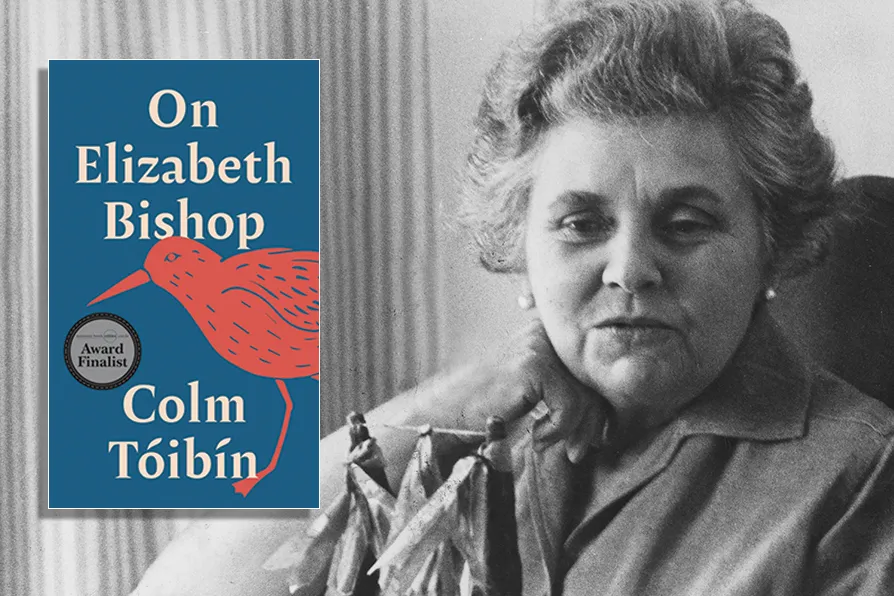GEOFF BOTTOMS appreciates the local touch brought to a production of Dickens’s perennial classic
FIONA O'CONNOR recommends a biography that is a beautiful achievement and could stand as a manifesto for the power of subtlety in art

 Elizabeth Bishop in 1964 in Petropolis were she lived for 15 years with architect Lota de Macedo Soares / Pic: Brazilian National Archives/CC
Elizabeth Bishop in 1964 in Petropolis were she lived for 15 years with architect Lota de Macedo Soares / Pic: Brazilian National Archives/CC
On Elizabeth Bishop
By Colm Toibin
Princeton University Press, £9.50
ELIZABETH BISHOP was one of the greats of 20th century poetry. She was of the generation of post-WWII US poets which included her close friend Robert Lowell, Marianne Moore — a mentor to her — and Thom Gunn.
Her writing style of almost conversational, apparently free verse, hides a hard-worked technical mastery of form that often meant decades-long reworking before publication.
In her person too she was not what she seemed. A small, mild-mannered housewifey-looking woman, but her life was adventurous both in her extensive travelling and in her non-conforming lesbian relationships.
And there were the tragic circumstances in her early childhood, her father dying when she was a baby and her mother being committed to a mental asylum when Bishop was only five, never to be seen again. Plus she was a flagrant alcoholic — all the ingredients for a vivid literary biography.
Here, though, novelist Colm Toibin does something more interesting than simply stirring through the events surrounding Bishop’s writing. In this small book, he conducts a masterclass in the power of subtlety in writing, to explore the crafting of a life into great art.
Toibin gets under the skin of Bishop’s writing practice and her aesthetics, filtering through her life to suggest the deep responses of an artist to experience. He reveals her influence on his own early reading and writing showing the intimacy of connection poetry offers.
The indelible mark of a great writer on those who follow chimes with TS Elliot’s view that poetry is a form of necrophilism — a love of the dead and an ongoing conversation with the dead.
Such an undertaking is integral to both writers — Toibin writes of his father’s death when he was a child and the emotional distance this laid down in relation to his mother.
The character of the widow recurs in Toibin’s novels; women of subtle strengths, constrained and ultimately unknowable, frequently surprise the Toibin reader by actions made large against the mundanity of otherwise well-behaved lives.
So this book is a deep conversation between Toibin and Bishop in which the mysterious nature of creativity is approached by looking carefully at detail, considering solitude, steely ambition, grief and catastrophe through small gestures made with plain words.
Toibin guides the reader in giving herself over to Bishop’s lines. He shows how the poet’s microscopic focus, in her poem, Sandpiper, for instance, works to suggest a magnified significance: “The world is a mist. And then the world is/minute and vast and clear. The tide / is higher or lower. He couldn’t tell you which./ His beak is focused; he is preoccupied,/ looking for something, something, something./ Poor bird, he is obsessed! / The millions of grains are black, white, tan and grey/mixed with quartz grains rose and amethyst.”
No detail too small is the approach taken with Bishop’s finely attuned poems. In the current chaotic, market-frenzied literary milieu it is salutary to think of such attention and commitment in developing a single poem for many years. It is probably impossible now, and Toibin — no shirker when it comes to firing out single-use bestsellers — acknowledges that Bishop’s independent income allowed her greater freedom.
Yet this small book itself is a return to a rarer aesthetic measure. Quietly, it is an innovative form of biography, richly creative in sifting through the writing technique to show Bishop’s “devious power” in action, creating “from what is said and what lies beneath,” where, as in the late poems, exact detail is used “to contain emotion, and suggest more, and then leave the reader unsure, unsettled.”
Toibin brings his considerable experience as a writer and as a reader to illustrate how the life of a poet sits behind the word, how the landscape of a poet’s experience becomes symbolised on the page.
In the roaring age of Trump, Musk, AI and every other horror, this book is a beautiful achievement and could stand as a manifesto for the power of subtlety in art.
Reaching for the Moon (2013) tells the story of the love affair between Elizabeth Bishop and Lota de Macedo Soares, directed by Bruno Barreto it is available on Apple TV, YouTube and other platforms.

A novel by Argentinian Jorge Consiglio, a personal dictionary by Uruguayan Ida Vitale, and poetry by Mexican Homero Aridjis

FIONA O’CONNOR steps warily through a novel that skewers many of the exposed flanks of the over-privileged












